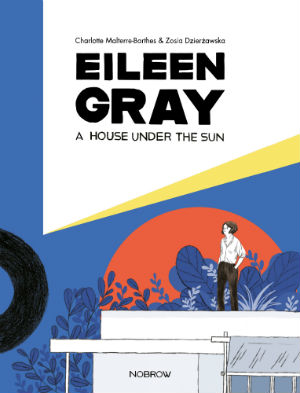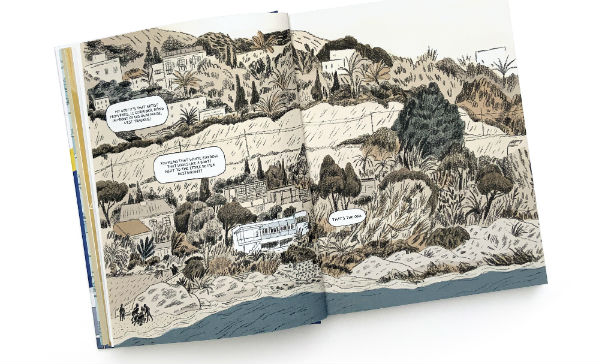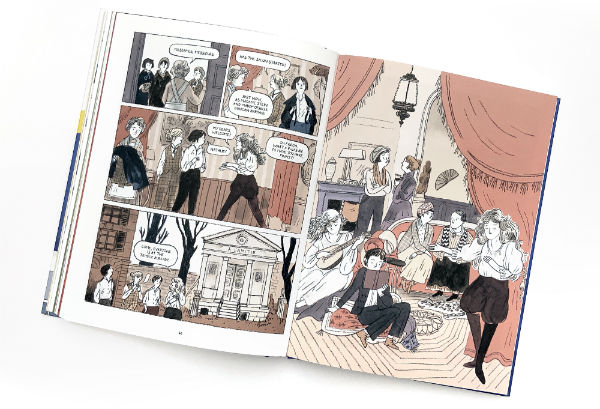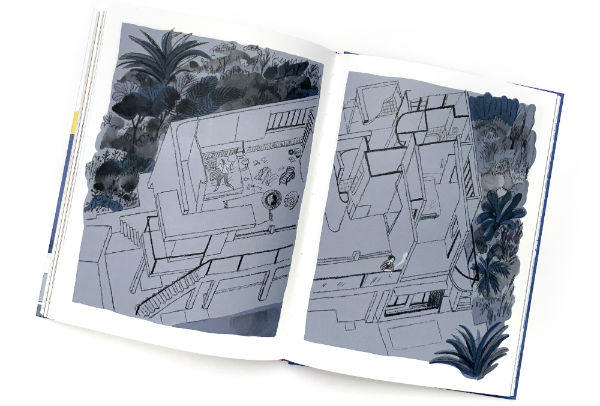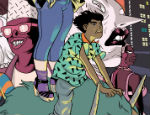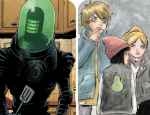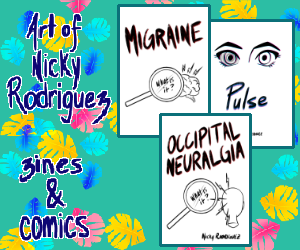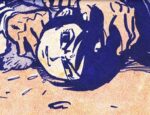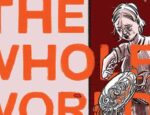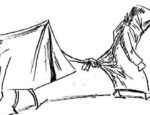Now considered an architectural design classic E-1027, a villa situated near the sea in the south of France, has a difficult and checkered past. The vision of Irish architect and important figure in the Modern Movement, Eileen Gray, it nonetheless became associated with the work of others, with Gray’s role almost written out of history. As is often the case with pioneering women.
Writer Charlotte Malterre-Barthes and artist Zosia Dzierzawska’s graphic biography of Gray uses E-1027 as the focal point of her story. Jumping timeframes it begins in the early 1960s with the death of artist and architect Le Corbusier on the beach below E-1027. His demise echoes one of the core themes of the book as onlookers remark on the significance of his death occurring in the vicinity of “his house”; a building that had only become linked to him due to his defacement of it with inappropriate murals years before.
It’s a motif that echoes backwards and forwards in time as different eras of Gray’s life build into a wider narrative that charts the development of her practice and a design sense that embedded the sensual and the human into the architectural. Malterre-Barthes and Dzierzawska trace her life in Ireland as a child in the 1880s, to her time in England in the early 1900s through to her inspirations in Paris in the 1920s.
But it’s the sequences with partner Jean Badovici within the environs of E-1027 – the coding of the building’s name representing numerical variations on their names – that take on particular significance with the very aesthetics of the building itself becoming embodied in the formation of the comic’s layouts; architectural design and page structure merging into one another. Breathing pained life into these historical figures and the forces that drove them, only occasionally does Malterre-Barthes fall into the trap of writing dialogue that feels less like conversation and more like overt exposition.
Dzierzawska’s visuals are a subtle reflection of subject matter throughout. Not simply in the colour coding of the different interweaving eras of Gray’s life but through more involved visual language as well. Scenes where the blueprints for the building permeate the page as characters move through them, for example, or a sequence where Gray’s artistic process is depicted as her climbing into and interacting with her architectural plans; the latter a quite brilliant representation of creativity that succeeds without seeming indulgent or overly self-aware. It’s a vibrant and occasionally dreamy style with the frequent breaks into symbolic double-page spreads speaking to the audience on an emotionally resonant level. Throughout, slightly caricatured but recognisable characters move through more realistic backgrounds, allowing us to connect with them on a very human level.
Of course any graphic biography that avoids heavy narration will always be something of a narrative shorthand but Eileen Gray: A House Under the Sun is more a book that asks us to recognise the suppression of the achievements of a pivotal voice in the arts as it is one looking to detail the minutiae of the subject’s existence; the impetus being on providing an expression of her life to interact with rather than provide a direct commentary on it. Backed up with supplementary material it also invites the reader to investigate its subject further; a fitting aim for a book that seeks to redress a balance and give this important figure the recognition she rarely got in her own lifetime.
Review by Andy Oliver
Charlotte Malterre-Barthes (W), Zosia Dzierzawska (A) • Nobrow Press, £15.99
Nobrow Press will be exhibiting at ELCAF. For more on ELCAF 2019 visit the festival site here and follow them on Twitter here. You can buy Eileen Gray: A House Under the Sun online here.






